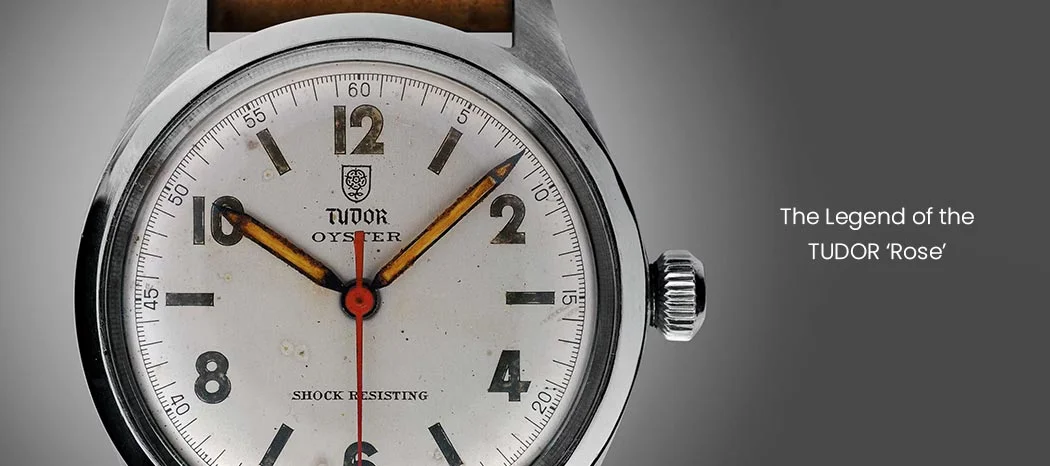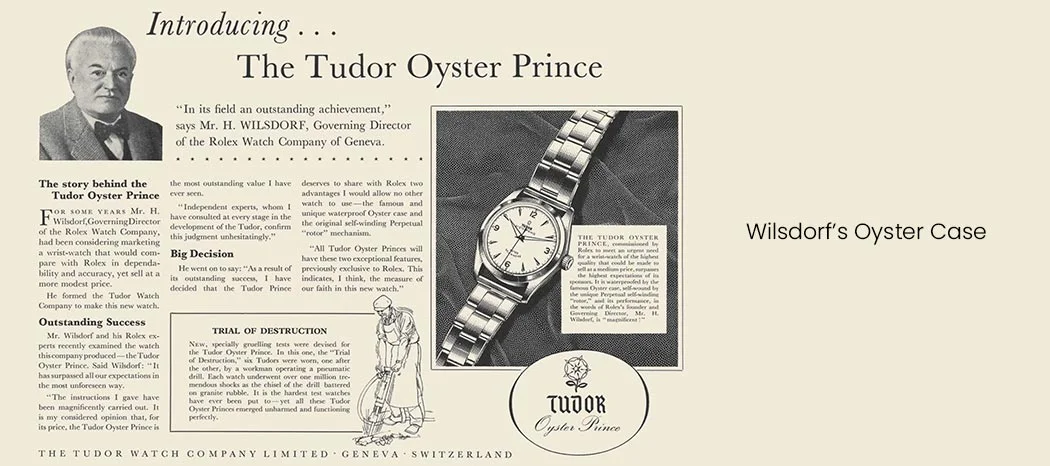TUDOR spent a third of the last century earning a distinct reputation by creating a golden ratio between performance and elegance.
Back in the 1920s, Wilsdorf envisioned TUDOR as an all-new watch brand with technical brilliance, reliability and robustness, crafting a legacy of timepieces that would “attain the highest standards of dependability” – making TUDOR watches of the best quality at the best possible price. Today, TUDOR’s entire Black Bay catalogue is not only a paean of the brand’s illustrious lineage of crafting nifty, mid-century divers but also poses as a creative canvas for cross-cultural collaboration with football maisons, motorsport marques, and more.
But if we take a second, and wonder – what makes TUDOR, ‘TUDOR’? Firing up our horlogerie time machines, we’re giving you a history lesson on the mighty TUDOR and its quintessential elements.
The ‘TUDOR’ Dynasty
In the roaring twenties, Hans Wilsdorf registered the trademark for “The Tudor” – striving to create a modestly priced catalogue of watches offering strong technical and design sensibilities. “TUDOR” is an ode to 15th to 17th century England, an era characterised by exploration, artistic expression, and revolution of humankind, under the House of Tudor. Wilsdorf also employed its heritage rose emblem, which comprised the conjoined red rose of the House of Lancaster and the white rose of the House of York. The rose of the House of Tudor represented the unification of two feuding royal houses through the marriage of Henry VII and Elizabeth of York in 1486, ushering in a period of stability and progress under the Tudor dynasty.
The Legend of the TUDOR ‘Rose’

In 1936, as Wilsdorf finally took the helm at TUDOR, a decade after Swiss maison ‘Veueve de Philippe Hüther’ registered its title, he incorporated a rose in TUDOR’s logo. What later came to be known as the revered ‘TUDOR Rose’ is a traditional heraldic flower of England associated with the House of TUDOR. Wilsdorf’s motif of the rose resting upon a shield symbolised the alter-egos of TUDOR – materialising the intersection between the rose’s elegance and the shield’s robustness.
As World War II no longer shrouded the world, Wilsdorf knew that TUDOR was destined for autonomy and limitlessness, hence creating the “Montres TUDOR S.A.” in 1947 with the emblematic rose boldly badging its dials. Finally, just over two decades later, the eternal TUDOR Rose retired in favour of only a shield as their new logo, representing emotions of resistance and reliability.
Wilsdorf’s Oyster Case

Armed with a heavy dose of technical brilliance, the TUDOR Oyster was unveiled. Designed with a 34-millimetre ‘oyster’ case inspired by the protective outer shell of its eponymous reef-dweller, its screw-down caseback and rubber-lined gasket shielded the case against water entry. The oyster case and newly incorporated screw-down crown created TUDOR’s first-ever, truly waterproof watch in 1947. It was upon this rock, that TUDOR built their church – creating a legacy of divers’ watches. Furthermore, in 1953, in a campaign to assert its reliability and robustness in extreme conditions, TUDOR claimed that their watches were worn by a coal miner during 252 hours of excavation, subject to pneumatic drill vibrations for 30 hours, worn motorbike racing for 1000 miles by stonecutters.
Legacy of Divers’ Watches

Every Black Bay we see today is a paean of TUDOR’s multi-decade legacy of pioneering the dive watch and its unbound spirit of oceanic exploration. Soon after the Oyster, came the Oyster Prince – the result of vigorous testing and continued development, thanks to Wilsdorf. It was designed to house two pioneering advancements: a self-winding Perpetual ‘rotor’ mechanism and a waterproof Oyster case.
Just two years later, in 1954, TUDOR’s grail diver arrived: the Oyster Prince Submariner. Continually evolving till the end of the millennium, it was a self-wound, screw-down caseback and a crown, Oyster case capable of immersing to 100 metres at launch, which doubled in the following years. During the 50s and 60s, TUDOR not only earned a reputation as a robust, sporty watchmaker but also a military watch supplier.
Snowflake Hands

At first glance, TUDOR’s Snowflake hands may seem like an aesthetical feat – simply thrown in to add some zing to a utility-spec divers’ dial – but in reality, it’s more function than just flair.
The Snowflake hands debuted in 1969 on the second generation of Tudor Submariner dive watches, references 7016 and 7021. Comprising an angular hour hand with a thick, square tip resembling the shape of a snowflake, it’s further complemented by a cube on the seconds hand.
While TUDOR hasn’t officially confirmed the inspiration behind it, it’s widely speculated that it was incorporated after a request from the French Navy – intended to enhance legibility and more real estate for lume, improving readability. The Snowflake hands have made significant appearances throughout TUDOR’s glory years of manufacturing divers’ watches, and today, it’s a resident feat on their Black Bay and Pelagos catalogues.





Recent Posts
Recent Comments
Archives